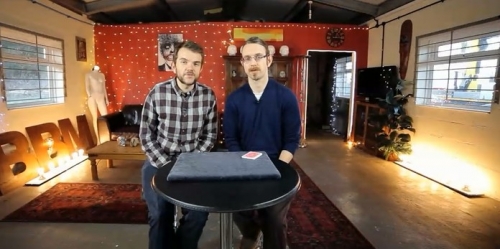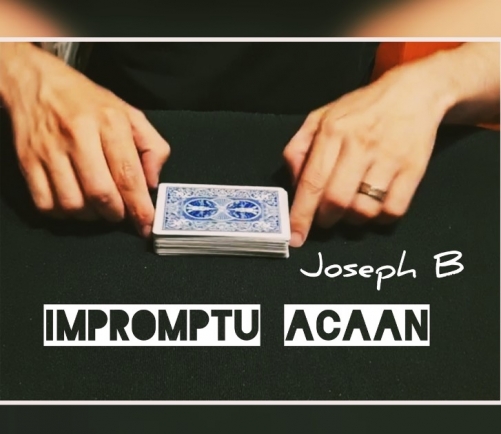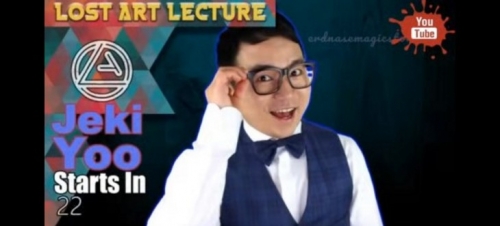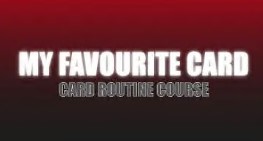Product Description
See Bottom of Product Page For James First Book!
Just finished reading your latest book. Thank you for sharing all the great information. It is obvious that only a person with your background as a mathematician, professor and magician, could write such a book. No junk. No filler. Just 200 pages of usable information explained in a clear and easy to understand manner. Well worth the price. – Floyd Morrow – San Jose, CA.
Simple Facts: James Solberg’s – Magic Square Methods and Tricks (First Book), was unquestionably one of our top sellers and most talked about books. Why? It contains some of the most awe-inspiring, jaw-dropping magical effects that ANYONE can do. Many performers have built their reputation on Magic Square’s (Charles Gauci being just one that knows the power of their impact).
If you think Magic Squares is just for close-up or parlor – Greg Gleason (Masters of Illusion 2016-2017) can assure you they work just as well in stage settings! Early reviews (for More Magic Square Methods and Tricks) state that it is everything the first book was – in terms of amazing applications with a kick.
“The Magic Square has been a particular fascination of mine for the past few years. James Solberg gives us an insightful and encyclopedic look at the plot leaving no square incomplete. I took a lot from his book and I know you will too!” – Andi Gladwin
Picture this: A member of the audience is allowed to name any two or three-digit number and to place it in any cell of their choice in an empty five-by-five grid. Then four other numbers are freely selected and placed in the grid. Several members of the audience are asked to separately add those five numbers, compare their answers, and agree upon the correct sum. While they are doing that, you fill in the empty cells of the grid. As soon as they announce their sum, you show that the grid is a 5-by-5 magic square that matches their total in 120 different ways.
Or, for another example, suppose that after a freely chosen number is placed in the grid, you complete the five-by-five magic square while blindfolded by calling out the numbers and positions of the cells verbally. Again, the patterns match the magic sum in 120 ways. If you are surprised to learn that such tricks are possible, you will be even more surprised to learn that they are not very difficult.
You have to know two simple rules that tell you how to move from one cell to the next, and you have to mentally add or subtract a single digit number as you make the move. Once you learn how, you can fill in the cells just about as fast as you can write. The properties of the magic square, including all 120 successful patterns, are automatically guaranteed.
This book, the second of a pair, contains entirely new methods, tricks, puzzles, and stunts involving magic squares, along with new theory that explains them. Although it builds on the previous book, for the most part the material is self-contained. It introduces three classes of magic squares that are easy to construct, are surprisingly versatile, and produce the best possible outcomes. For both four-by-four and five-by-five squares, you can start from any freely chosen number in any chosen cell and complete a magic square as fast as you can write the numbers, using no mental mathematics beyond counting. In addition to simplifying the construction of four-by-four squares, these new methods crack the code for five-by-five squares, making them practical for live performances.
Surprisingly, the five-by-five case is both easier and more powerful than the four-by-four. The pattern-based method guarantees 120 successes that are symmetric and easy to remember. If you want to include irregular patterns of five cells, there are actually 690 predictable successful patterns. Again, you can start with any number in any cell and count in different directions and by different steps using just two simple rules.
Many new tricks are made possible by these methods, such as creating a five-by-five square that contains up to ten freely chosen numbers. There are ideas for reversible squares (like the one on the cover) and non-numerical squares involving ESP cards and geometric shapes. The fourteen suggested tricks are only samples of the new opportunities presented by these methods.
The final section contains a complete theoretical treatment of magic squares of order five, including a formula covering every possible solution, a slot method that allows you to turn any ten numbers into a magic square, and several path-based methods that avoid all mathematical calculation. Although you do not need to understand the underlying theory to learn methods, it is fully explained for those interested in exploring variations.
Preface
How to Use This Book
Section I. Methods
1. Preliminaries
2. Sequential Squares of Order Four
3. Sequential Squares of Order Five
4. Almost-Sequential Squares
5. Multi-Sequential Squares
6. Presentation
Section II. Tricks
7. Any Chosen Sum
8. Improvising
9. Sight Unseen
10. A Cosmic Connection
11. Two Chosen Numbers
12. Four Chosen Numbers
13. Five Chosen Numbers
14. Ten Chosen Numbers
15. The Answer to Everything
16. How Do You Say Hello to an Alien?
17. The Poker Legend
18. The Spectator Deals
19. Are You Psychic?
20. Odds and Ends
Section III. Theory
21. Magic Squares of Order Five
22. Why Sequential Methods Work
References
Appendices
I. Successful Patterns for Order Four
II. Regular Patterns for Order Five
III. Additional Patterns for Order Five
About the Author
Dr. James J. Solberg received an undergraduate degree in mathematics from Harvard, plus two Master’s, and a Ph. D. from the University of Michigan before joining the faculty of Purdue University, where he taught mathematical modeling in the School of Industrial Engineering for over forty years. A lifelong aficionado of clever magic, he lives with his wife in West Lafayette, Indiana.
 USD
USD



